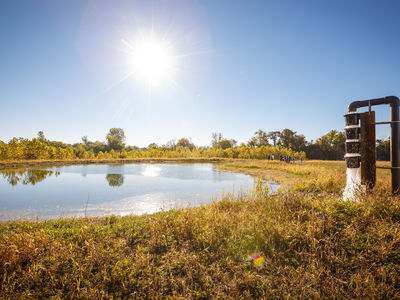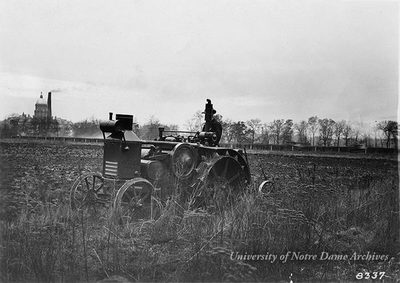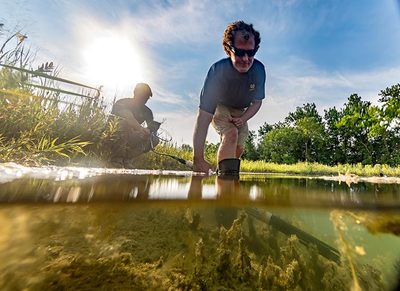
Strong connections exist between Notre Dame's founding and early life and today's University. While this is especially true of its roots in the Catholic intellectual tradition, it’s also observed in some lesser-known moments in history that show how Notre Dame has carried out its mission as a residential campus where scholars have pursued their inquiries for 175 years. The research taking place here and the spirit that exists here are reflections of a past marked by firsts and faith.
Notre Dame is a place that uses tradition as a foundation for its life and work. Our intellectual and spiritual heritage propels us forward. This timeline highlights certain points of Notre Dame history - some well-known, others perhaps less so - and draws a parallel to today’s campus.
1843 | The Early Campus: Farms & Forestry
THEN

In the midst of a brutal Indiana winter, Sorin and his companions began clearing land of thick forest for a new church and a college. It was more of a boarding school in its early years, offering education to young men and boys of all ages, and in some cases, students paid tuition through labor in helping to build the college. Its remote location - the village of South Bend was about two miles south - meant the school needed to be largely self-sustaining. As a result, some of the first structures built on campus were farm buildings and a bakery to provide sustenance to the student and faculty population. A few years later, St. Mary’s College was established, and Sisters of Holy Cross farmed on land in the northern part of St. Joseph County to provide food for that institution. The farms relocated several times, and were in service (lastly at an off-campus location) until 1995.
NOW

While the Notre Dame community is now served by an award-winning Campus Dining division, at least a portion of the old farmland is still a valuable part of the University. One of the old farm sites is now St. Patrick’s Park, where the Notre Dame Environmental Change Initiative conducts research at its Linked Experimental Ecosystem Facility (ND-LEEF). ND-LEEF is a globally unique research facility that features two ponds, streams and wetlands that are connected—an important feature when investigating issues related to environmental change. (In addition, the facility contains a live bald eagle camera.)
View the Notre Dame 175 Timeline at 175.nd.edu/timeline